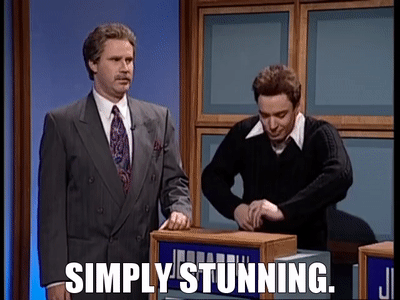Good offense beats good defense, so they say.
Since 1913 when Jesse Harper took over as head coach, Notre Dame has totaled 26 seasons in which the offense placed in the top 10 nationally in scoring. From that group, 12 teams didn’t quite make top 5 including: 1914 (8th), 1923 (9th), 1924 (6th), 1930 (10th), 1946 (6th), 1965 (10th), 1970 (9th), 1973 (8th), 1991 (7th), 1993 (8th), 1996 (10th), and 2005 (8th).
The national scoring offense rankings since Brian Kelly took over looks like this:
2010 (68th)
2011 (49th)
2012 (81st)
2013 (74th)
2014 (40th)
2015 (33rd)
2016 (53rd)
2017 (24th)
2018 (42nd)
2019 (13th)
A huge caveat to all of this talk is the problem of historical schedule strength, not just for Notre Dame but for the rest of the country. Critics will rail against the Irish scoring 66 points against New Mexico last year as a dilution of the schedule. Yet, teams like Appalachian State and Lafayette finished above Notre Dame in the scoring rankings last year, aren’t playing in major conferences, and weren’t even Division-I until 1978 and 1982, respectively.
Each season truly needs its own deep dive to sort through the national rankings. Either way, if you finish in the top 5 from the Power 5 it’s highly likely you were a dominant offense. Here are those top rankings in Notre Dame history sorted by year:
1913 – 3rd (38.3 PPG)
Highest Output: 87, Ohio Northern
Lowest Output: 14, Penn State
Top Scoring Team: Iowa (44.3 PPG)
That whole forward pass thing with Gus Dorais and Knute Rockne kind of worked out well. The Irish stunned the world by dropping 35 points on Army at West Point which highlighted this undefeated season. The Cadets only gave up 22 points in their other 8 games. While Notre Dame scored a combined 149 points against two cupcakes, the 30 points scored at Texas to finish the season was 53.5% of scoring the Longhorns allowed all year.
1921 – 4th (34.1 PPG)
Highest Output: 57, Depauw
Lowest Output: 7, Iowa & Nebraska
Top Scoring Team: Cornell (49.0 PPG)
This team only lost once and yup you guessed it that happened in Iowa City–a game in which Notre Dame heavily out-gained the Hawkeyes. The Irish were able to shut out the Cornhuskers to salvage a win at home in another low-scoring affair. This was a season with the aforementioned two duds, plus a few average games, and about 5 excellent performances. It also featured John Mohardt running for 781 yards, throwing for 995 yards, with a combined 21 touchdowns in one of the best offensive seasons in Irish history.
1932 – 3rd (28.3 PPG)
Highest Output: 73, Haskell
Lowest Output: 0, Pitt & USC
Top Scoring Team: Texas Tech (31.8 PPG)
Fans were officially worried about the post-Rockne era during this season. Notre Dame beat up on its first 3 tune-up opponents while scoring 177 points before being shutout at Pitt and averaging only 13 points over the final 6 games. This also concluded Hunk Anderson’s second season in which he was shutout in the finale for the second year in a row. I’m told the message boards at the time were downright irate.
1943 – 2nd (34.0 PPG)
Highest Output: 55, Georgia Tech
Lowest Output: 14, Iowa Pre-Flight & Great Lakes
Top Scoring Team: Duke (37.2 PPG)
Frank Leahy would ship off to the Pacific theater after 1943 and this would be the first run of top 5 scoring teams in 4 out of the next 5 seasons he coached and the second season since switching to his famous T-formation.
For all intents and purposes, this was by far the best offense in the country having faced 7 ranked teams, including the final AP 2nd, 3rd, and 4th ranked opponents. The team also lost Heisman-winning quarterback Angelo Bertelli to World War II after 6 games. With Bertelli under center the Irish averaged 43.6 points per game and just 19.7 in his absence.
1947 – 3rd (32.3 PPG)
Highest Output: 59, Tulane
Lowest Output: 21, Iowa
Top Scoring Team: Michigan (39.4 PPG)
When Leahy returned from war the ’46 team just missed out on a top 5 scoring season. In 1947, on their way to a National Championship they scored at least 21 in every game and that low effort against Iowa was in the middle of a 3-game shutout of their opponents. The country’s highest scoring team also finished undefeated but second in the polls. Too bad. Led by Heisman-winning quarterback Johnny Lujack, the Irish out-scored their opponents 291-52 which included a 31-point win against USC, then the biggest margin of victory in the rivalry.
1948 – 5th (32.0 PPG)
Highest Output: 46, Washington
Lowest Output: 12, Northwestern
Top Scoring Team: UTEP (32.8 PPG)
This was an unusually weaker schedule for Notre Dame during the era, featuring only two ranked opponents. That low effort in South Bend against Northwestern came against perhaps the best Wildcats team in their school history. They would go on to win the Rose Bowl, largely because National Champion Michigan was ineligible for the Rose Bowl since they made an appearance the prior year and teams couldn’t make more than one visit to Pasadena every 3 seasons. A 14-14 tie at USC to finish the season cost Notre Dame the title.
1949 – 4th (36.0 PPG)
Highest Output: 49, Indiana
Lowest Output: 27, Washington & SMU
Top Scoring Team: Army (39.3 PPG)
Perhaps Notre Dame’s greatest team ran roughshod over this schedule, scoring at least 30 points in 7 out of their 10 games. Although, they must have been looking past Washington and SMU as those programs went a combined 8-11-1 in 1949.

The regular season finale at the Cotton Bowl was nearly disastrous. Without the injured and reigning Heisman winner Doak Walker, SMU junior and future no. 1 overall NFL pick Kyle Rote accumulated 261 total yards and 3 touchdowns in the near-upset as 28-point underdogs. For his effort, Rote would eventually win the Texas Sportswriters’ Association award for the “Outstanding Individual Peformance by a Texas Athlete in the First Half of the 20th Century.”
1953 – 2nd (31.7 PPG)
Highest Output: 48, USC
Lowest Output: 14, Iowa
Top Scoring Team: Texas Tech (38.6 PPG)
Leahy’s final team at Notre Dame finished second nationally in scoring. If you go back to his final season at Boston College in 1940, this gave Leahy top 5 scoring offenses in 6 out of his last 12 coaching campaigns before retiring. Unfortunately, a tie at home to Iowa would cost the legend another title. However, dropping a season-high in points on USC had to feel good, that was the most points the Irish scored against the Trojans from the series beginning in 1926 until the 51-0 thumping in 1966.
1964 – 3rd (28.7 PPG)
Highest Output: 40, Navy
Lowest Output: 17, Pitt & USC
Top Scoring Team: Tulsa (36.2 PPG)
The Return to Glory™ that nearly brought a title in Ara’s first season saw an offensive explosion against an admittedly weak schedule. The Irish averaged 31.8 points per game through the first 6 games before dropping a couple duds later in the season, including the devastating finale at USC. This season was highlighted by Heisman-winner John Huarte and his explosive 10.1 yards per attempt passing season, still a school record.
1966 – 1st (36.2 PPG)
Highest Output: 64, Duke
Lowest Output: 10, Michigan State
Here is the only season in history in which Notre Dame led the country in scoring average. More amazing since the ‘Game of the Century’ ended in a brutally conservative 10-10 tie. Of course, the 51-0 bombardment of USC was a highlight of this season. The Irish would score at least 60 points twice under Parseghian, first in ’65 against Pitt (69 points, the most scored from 1932 until 1977) and also the 64-0 shutout against Duke in this season.
The 1966 offense featured 6 All-Americans!
1967 – 3rd (33.7 PPG)
Highest Output: 56, Iowa
Lowest Output: 7, USC
Top Scoring Team: Arizona State (35.0 PPG)
Notre Dame scored 38.6 points per game in their 8 wins during the 1967 season. However, the team started 2-2 with a combined 28 points scored in losses against Purdue and USC–the only ranked teams they faced all year. The Trojans got their payback with a 17-point win on their way to a title snapping a 10-game losing streak at Notre Dame Stadium.
1968 – 4th (37.6 PPG)
Highest Output: 58, Illinois
Lowest Output: 17, Michigan State
Top Scoring Team: Houston (42.5 PPG)
Three straight years of top 5 scoring offenses! Only one National Title, boo! This season saw the Irish rock several teams, with 255 points scored against Oklahoma, Iowa, Illinois, Navy, and Pitt. Yet, proving that it’s not only Brian Kelly offenses that falter against good teams, this ’68 squad scored only 60 points in 2 losses and a tie. Being shutout in the second half in the finale against USC during the lone tie was frustrating.
1977 – 5th (35.0 PPG)
Highest Output: 69, Georgia Tech
Lowest Output: 13, Ole Miss
Top Scoring Team: BYU (39.4 PPG)
No one would’ve thought this team would have a potent offense or win a championship after witnessing the early season returns. Through the first 5 games, they averaged just 20.6 points including a baffling loss down south at Ole Miss. Then, the offense averaged 45.2 points per game over the final 7 games highlighted by dropping 38 points on a Texas team in the Cotton Bowl who hadn’t given up more than 28 all season.
1992 – 4th (36.4 PPG)
Highest Output: 54, Boston College
Lowest Output: 16, Stanford
Top Scoring Team: Fresno State (39.2 PPG)
A season that almost was had an offense that looked phenomenal most of the season, averaging 43 points across 9 games. That included a trio of 50-point efforts most impressively taking care of a ranked Boston College team 54-7 in South Bend in what is still the worst loss for the Eagles in series history. It was those combined 50 points in a tie to Michigan, loss to Stanford, and near loss to Penn State that kept this team from achieving true greatness.
It’s no coincidence that 4 players (Rick Mirer, Jerome Bettis, Irv Smith, Reggie Brooks) from this offense were drafted in the first 2 rounds, including the first 3 in the top 20 selections.





That 1943 schedule looks like something I’d try to put together in NCAA ’12.
